Themed collection Remodelling of Biomembranes

Introduction to remodeling of biomembranes
Reinhard Lipowsky and Rumiana Dimova introduce the Soft Matter themed issue on remodeling of biomembranes.
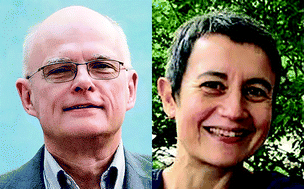
Soft Matter, 2021,17, 214-221
https://doi.org/10.1039/D0SM90234A
Diffusive transport of nanoscale objects through cell membranes: a computational perspective
Clarifying the diffusion dynamics of nanoscale objects with cell membrane is critical for revealing fundamental physics in biological systems. This perspective highlights the advances in computational and theoretical aspects of this emerging field.
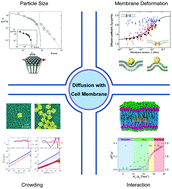
Soft Matter, 2020,16, 3869-3881
https://doi.org/10.1039/C9SM02338K
Comparing physical mechanisms for membrane curvature-driven sorting of BAR-domain proteins
We review current theoretical models for curvature sensing of BAR-domain proteins, test the models on 2 proteins, and present new electron microscopy data on the organization of BAR domains on tubes.

Soft Matter, 2021,17, 4254-4265
https://doi.org/10.1039/D0SM01573C
Long-range mechanical signaling in biological systems
Cells can respond to signals generated by other cells that are remarkably far away.
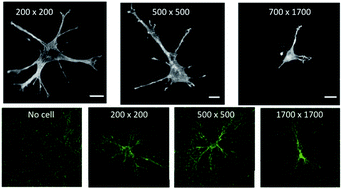
Soft Matter, 2021,17, 241-253
https://doi.org/10.1039/D0SM01442G
ENTH domain-dependent membrane remodelling
Cellular membranes are anything but flat structures.
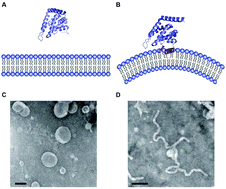
Soft Matter, 2021,17, 233-240
https://doi.org/10.1039/C9SM02437A
Increasing complexity in small-angle X-ray and neutron scattering experiments: from biological membrane mimics to live cells
We review compositional models for analyzing small-angle X-ray and neutron scattering data of complex membrane mimics and live cells.

Soft Matter, 2021,17, 222-232
https://doi.org/10.1039/C9SM02352F
Active shape oscillations of giant vesicles with cyclic closure and opening of membrane necks
During each active oscillation cycle, the vesicle shape undergoes a symmetry-breaking transformation from an up-down symmetric to an up-down asymmetric dumbbell followed by the reverse symmetry-restoring transformation.

Soft Matter, 2021,17, 319-330
https://doi.org/10.1039/D0SM00790K
Unraveling topology-induced shape transformations in dendrimersomes
Using cell-mimetic dendrimersomes we demonstrated how changes in the molecular topology of the amphiphilic Janus dendrimers forming the bilayer lead to the evolution of shape without the need for any active cellular machinery.
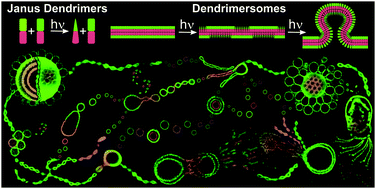
Soft Matter, 2021,17, 254-267
https://doi.org/10.1039/D0SM01097A
Annexin A4 trimers are recruited by high membrane curvatures in giant plasma membrane vesicles
Protein structure and curvature sensing for annexin A4 trimers are coupled. These findings may provide new insight for the mechanisms underlying plasma membrane repair.
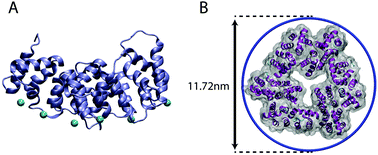
Soft Matter, 2021,17, 308-318
https://doi.org/10.1039/D0SM00241K
Lipidomic atlas of mammalian cell membranes reveals hierarchical variation induced by culture conditions, subcellular membranes, and cell lineages
Lipid membranes are ubiquitous biological organizers, required for structural and functional compartmentalization of the cell and sub-cellular organelles.
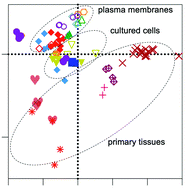
Soft Matter, 2021,17, 288-297
https://doi.org/10.1039/D0SM00404A
Reversible membrane deformations by straight DNA origami filaments
Reversible MgCl2-induced blunt-end polymerization of membrane-bound straight DNA origami monomers into filaments leads to protruding deformations on freestanding lipid membranes.
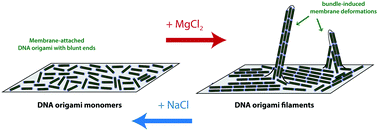
Soft Matter, 2021,17, 276-287
https://doi.org/10.1039/D0SM00150C
Membrane morphologies induced by mixtures of arc-shaped particles with opposite curvature
Three-way junctions of membrane tubules are stabilized by particles generating membrane curvature opposite to the particles that induce the tubules.

Soft Matter, 2021,17, 268-275
https://doi.org/10.1039/C9SM02476J
Particle engulfment by strongly asymmetric membranes with area reservoirs
We study the engulfment of solid particles by membranes with area reservoirs that are stabilized by large spontaneous curvature, and show that the properties of the reservoir can influence membrane remodelling processes.
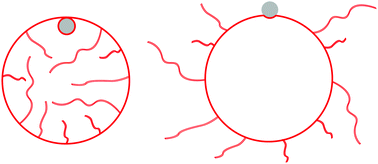
Soft Matter, 2021,17, 298-307
https://doi.org/10.1039/C9SM02367D
The transbilayer distribution of polyunsaturated phospholipids determines their facilitating effect on membrane deformation
In the cell, membrane deformation and fission (collectively referred to as ‘budding’) is driven by specific protein machineries but is also influenced by lipid composition.
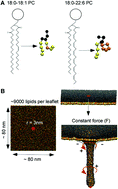
Soft Matter, 2020,16, 1722-1730
https://doi.org/10.1039/C9SM02107H
Simple sugars shape giant vesicles into multispheres with many membrane necks
A lipid vesicle exposed to an interior sucrose and an exterior glucose solution can attain a variety of multispherical shapes with different numbers of large and small spheres. For each shape, all spheres are connected by narrow membrane necks.

Soft Matter, 2020,16, 1246-1258
https://doi.org/10.1039/C9SM01890E
Quantitative investigation of negative membrane curvature sensing and generation by I-BARs in filopodia of living cells
We analyze diffraction-limited filopodia of living cells to quantify negative curvature sensing and generation for two prototypic I-BAR domains.
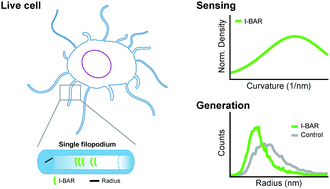
Soft Matter, 2019,15, 9829-9839
https://doi.org/10.1039/C9SM01185D
Actin shells control buckling and wrinkling of biomembranes
Compression of membrane–actin cell mimics generates buckling and wrinkling depending on actin thickness.
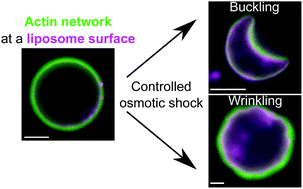
Soft Matter, 2019,15, 9647-9653
https://doi.org/10.1039/C9SM01902B
Structured and intrinsically disordered domains within Amphiphysin1 work together to sense and drive membrane curvature
Cellular membranes undergo remodeling during many cellular processes including endocytosis. Here we elucidated the functional role of the disordered domain in Amphiphysin1 by gradually truncating it, creating a family of mutant proteins.
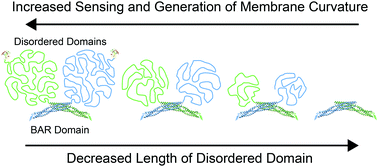
Soft Matter, 2019,15, 8706-8717
https://doi.org/10.1039/C9SM01495K
Correction: Long-range mechanical signaling in biological systems
Soft Matter, 2021,17, 410-410
https://doi.org/10.1039/D0SM90235G
About this collection
This themed collection, guest-edited by Professors Rumiana Dimova & Reinhard Lipowsky (Max Planck Institute (MPI) of Colloids and Interfaces) provides state-of-the-art reviews on membrane processes, as well as original articles at the forefront of research on remodelling biomembranes.
Biomembranes consist of fluid bilayers with many lipid and protein components. This fluidity allows the membranes to respond to different environmental cues by changing their local molecular composition, as well as their shape and topology.